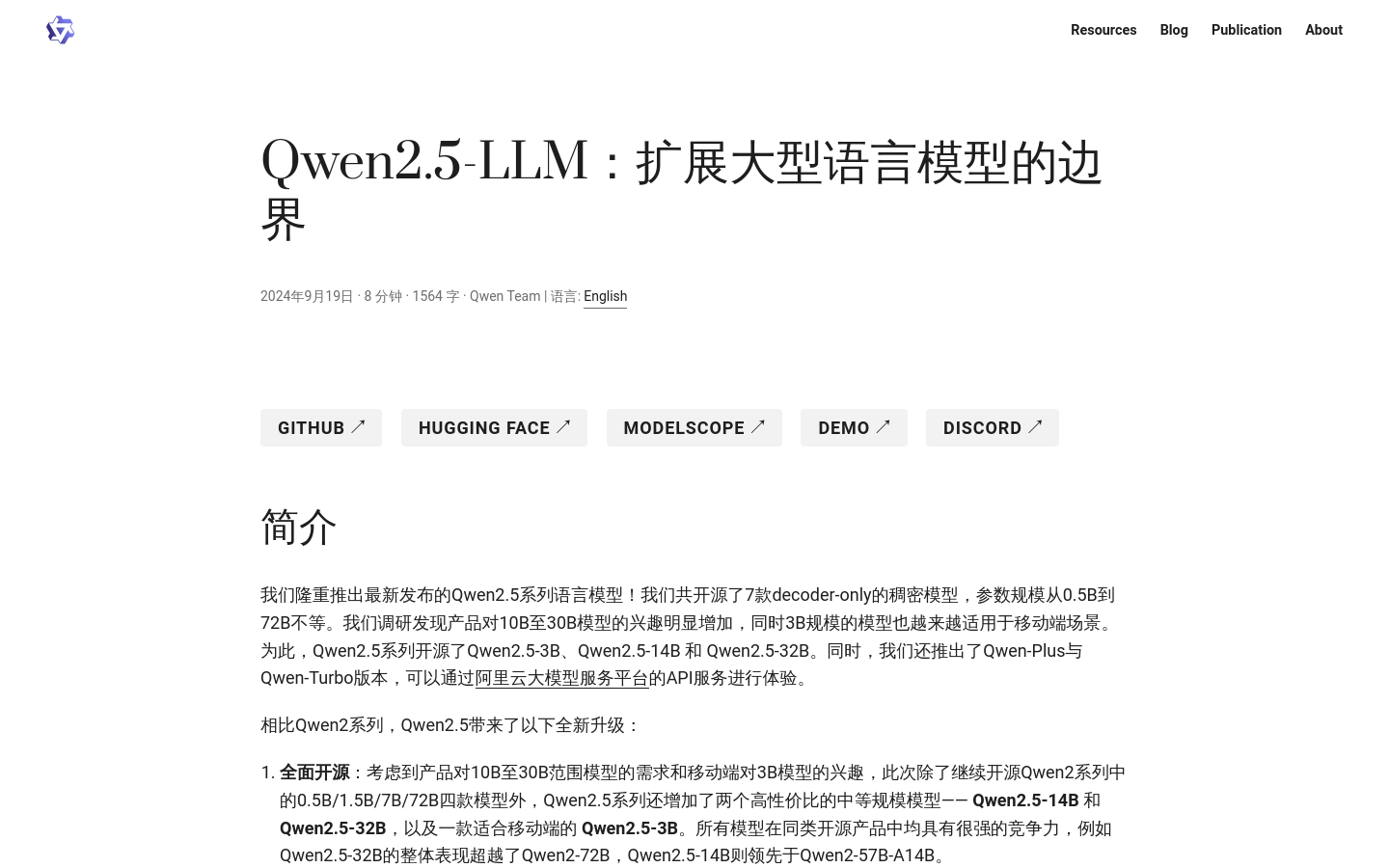

Qwen2.5 LLM
Overview :
The Qwen2.5 series language models consist of a range of open-source decoder-only dense models with parameter sizes ranging from 0.5B to 72B, designed to meet various product requirements for model scale. These models excel in natural language understanding, code generation, mathematical reasoning, and many other fields, making them particularly suitable for applications that require high-performance language processing. The release of the Qwen2.5 series models marks a significant advancement in the realm of large language models, providing powerful tools for developers and researchers.
Target Users :
The Qwen2.5 series of language models is tailored for developers, data scientists, and researchers who need to innovate and conduct research in fields such as natural language processing, machine learning, and software engineering. These models can assist in building intelligent applications such as chatbots, content generators, and code assistance tools, enhancing development efficiency and application performance.
Use Cases
Used to build a system capable of automatically generating technical documentation.
Integrated into an online programming platform to provide code auto-completion and error detection features.
Serves as a language model to assist researchers in language acquisition and cognitive science experiments.
Features
Fully open-source, featuring models ranging from 0.5B to 72B in scale.
Supports long text generation, with a maximum capacity of up to 8K tokens.
Excels in various benchmark tests such as MMLU, GPQA, and MATH.
Enhances code generation capabilities, scoring high in tests like LiveCodeBench.
Improves mathematical reasoning skills, showing significant score increases in MATH benchmark tests.
Generates content that aligns more closely with human preferences, with increased scores in Arena-Hard and MT-Bench.
Supports structured data understanding and generation, such as tables and JSON format.
How to Use
Step 1: Visit the official GitHub page of the Qwen2.5 series language models.
Step 2: Choose the appropriate model version to download based on your needs.
Step 3: Read the model's usage documentation to understand how to configure and run the model.
Step 4: Integrate the model into your own projects or research.
Step 5: Utilize the API provided by the model for natural language processing tasks.
Step 6: Adjust and optimize application performance based on the model's outputs.
Featured AI Tools

Gemini
Gemini is the latest generation of AI system developed by Google DeepMind. It excels in multimodal reasoning, enabling seamless interaction between text, images, videos, audio, and code. Gemini surpasses previous models in language understanding, reasoning, mathematics, programming, and other fields, becoming one of the most powerful AI systems to date. It comes in three different scales to meet various needs from edge computing to cloud computing. Gemini can be widely applied in creative design, writing assistance, question answering, code generation, and more.
AI Model
11.4M
Chinese Picks

Liblibai
LiblibAI is a leading Chinese AI creative platform offering powerful AI creative tools to help creators bring their imagination to life. The platform provides a vast library of free AI creative models, allowing users to search and utilize these models for image, text, and audio creations. Users can also train their own AI models on the platform. Focused on the diverse needs of creators, LiblibAI is committed to creating inclusive conditions and serving the creative industry, ensuring that everyone can enjoy the joy of creation.
AI Model
6.9M













